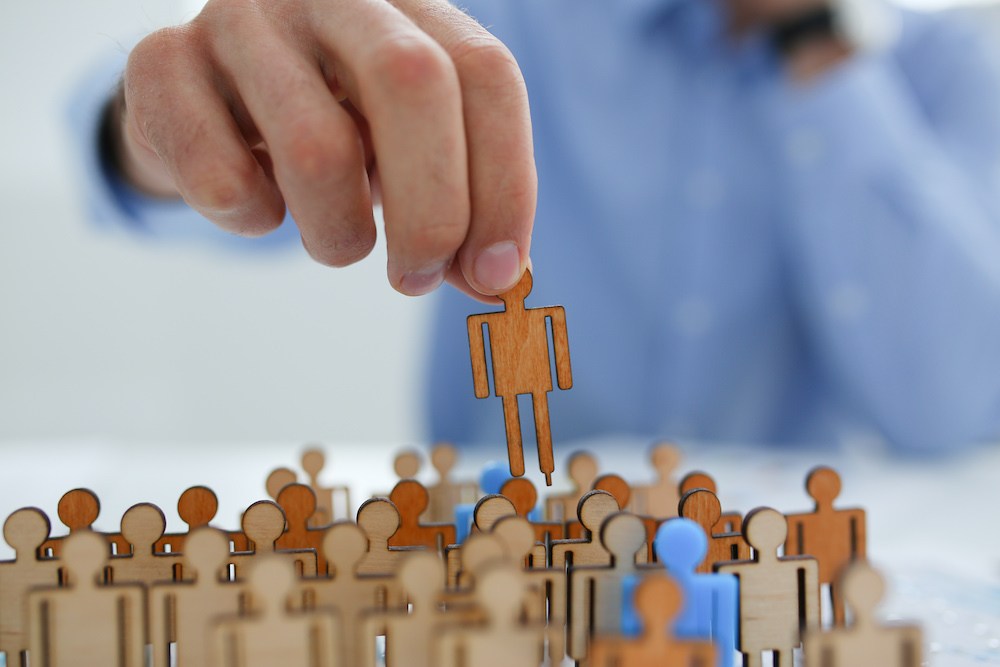When a team works together, it works well. When employees mistrust each other or carry bias, they struggle to succeed. The key to fighting unconscious or implicit bias is promoting inclusion in the workplace.
- What is Unconscious Bias?
- Taking an Unconscious Bias Test is Illuminating
- The Danger of Unconscious Bias in the Workplace
- Unconscious Bias in Hiring
- What is Unconscious Bias Training?
- Benefits of Unconscious Bias Training
- Does Unconscious Bias Training Work?
- Can you Facilitate Unconscious Bias Training Online?
- Examples of Types of Unconscious Bias
What is Unconscious Bias?
Unconscious biases are the impressions, beliefs, or feelings we have about others, often not supported by facts or evidence—or even known to us. Every day, we make snap judgments about others based on stereotypes and misinformation and this is often without our awareness. These often-unknown attitudes about others are called unconscious or implicit biases.
These biases shape the beliefs that we have about the world around us—and, often, the people in it—based on our past experiences. They impact us in many ways, often in ways we don’t even recognize.
- Our tendency to hang out, or gravitate to people who are like us
- The negative reaction we may feel when we encounter someone who is poorly dressed, or unkempt
- The favorability we feel toward a graduate from our alma mater
- The belief that our baby boomer staff members won’t gravitate toward new technology like our new Gen Z employees will
What is troublesome about unconscious biases is just that—they’re unconscious. In many instances, we don’t know that these perceptions impact our interactions and decisions.
Taking An Unconscious Bias Test Is Illuminating
We all have unconscious, or implicit, bias. Don’t believe it? This Implicit Association Test (IAT) from Harvard is one of the standard unconscious bias tests. It will challenge your assumptions and likely reveal some surprising things about your own beliefs and biases.
Being unaware of or unintentional about mitigating our biases can impact our actions, or lack thereof, in work settings. The influence of unconscious bias spans decisions across the talent management and employee engagement spectrum. For example, we may overlook a young internal candidate for a promotion because of an incorrect assumption that they aren’t prepared to take on more responsibility—or that we chose a male candidate for a new job because we felt the female candidate we overlooked wouldn’t be “serious enough” about the position.

Whether making hiring and promotion decisions, choosing members of a project team, or simply determining whether or not to validate someone’s input and ideas, unmitigated bias can unknowingly undermine our efforts to create healthy and inclusive workplaces.
Unconscious biases are pervasive—and potentially destructive.
Interested in learning more about how unconscious bias may be impacting your decisions—or those of others in your company?
The Danger of Unconscious Bias in the Workplace
Unconscious bias is a pervasive factor in workplaces across America. Our biases, which can stem from media, upbringing or societal factors, are unavoidable—yet, left unchecked, can have damaging impacts in the workplace. Consider an experiment designed to illustrate the potential for bias to shape our decision making:
Participants were divided into two mixed-gender groups. One watched a video pitch by an entrepreneur seeking funding—voiced by a male narrator—while the other saw an identical pitch from a female narrator. Those in the first group deemed the pitch worthy of funding by a margin of 68 percent, whereas only 32 percent thought the same about the female-narrated pitch.

Gender bias is just one area where our ingrained beliefs can lead us astray. Bias can relate to any number of factors about others that have formed over time. What’s particularly undermining about biases is that we are often unaware of how they’re impacting what we think about others or the decisions we make.
Unconscious Bias In Hiring
An area that is subject to the influence of unconscious bias is the recruiting and hiring process. For instance, can you think of a time when you really connected with a job candidate during the interview process? Chances are you were being influenced by unconscious biases that primed you to feel favorably about that candidate, as we are hardwired to more strongly favor likeness or similarity over difference. That may not seem so bad. But think about the reverse. Can you think about a time when you were really turned off by a job candidate during the interview process? Again, unconscious bias was likely at work. In either case, these biases cause us to overlook facts in favor of impressions based on our own preconceived notions and past experiences.

Failing to mitigate the impact of unconscious bias can undermine organizational Diversity, Equity and Inclusion efforts and result in companies failing to realize the benefit of diverse thoughts and opinions that could lead to innovation and breakthrough ideas. It can result in the loss of exceptional talent who decide to leave to seek a job elsewhere, where their talent might be more appreciated.
Are the dangers of unconscious bias running rampant in your organization?
What is Unconscious Bias Training?
If we accept that every person has unconscious biases as a part of the human experience, the question becomes “what can be done to limit them?” An important first step in minimizing the impact of unconscious bias is being aware that it exists. Next is to identify how they potentially influence our feelings, beliefs, and decisions. Awareness and identification aren’t enough – building a skill set to act against our biases when they arise in work interactions is the next step.
Unconscious bias training can help you and your staff members understand the pervasiveness of unconscious bias, recognize their own unconscious biases and take steps to minimize the negative impact of unconscious bias in the workplace.

How could unconscious bias training help minimize this type of bias in your workplace?
Benefits of Unconscious Bias Training
Unconscious bias training, as an initiative within larger strategic efforts, can help promote a more productive and inclusive workplace culture. As an article published on the American Bar Association website illustrates, businesses that deter women and minorities from exhibiting their full potential “not only expose themselves to liability, they prevent themselves from potentially multiplying their customer base and earning greatly increased profits.”
Unconscious bias training can help.
Over the Past 5 Years the Cost of Turnover Due to Workplace Culture Cost Companies $223 Billion
In fact, taking steps, which include mitigating unconscious bias, to ensure that we value and draw from the diversity within our organizations has been shown to:
- Help in recruiting top talent
- Drive innovation to produce better products
- Help to engage and retain employees
- Improve customer satisfaction
- Increase profits
One of the first steps in addressing unconscious bias is raising awareness that it even exists. That’s one of the key benefits of training—raising awareness of unconscious bias and providing a forum for self-exploration and discussion.
When organizations make a commitment to training employees to recognize their own unconscious bias and the impacts of that bias, everyone benefits. When the importance of these issues is prioritized through training and messaging, employees are more likely to see these incidents in a different context. This results in greater job satisfaction, which means lower rates of turnover and an improved ability to retain highly skilled employees.
Aren’t these the kind of benefits you’d like to see in your organization?
Does Unconscious Bias Training Work? Why Does It Sometimes Fail?
Unconscious bias training can be an effective way to raise employee awareness of biases, recognize the biases in themselves and others and understand the undermining effects of unchecked biases. Unconscious bias training can achieve these objectives, and often does. But sometimes it fails to affect cultural change or the learning isn’t consistently applied. Why?

Too often, training efforts of this kind are one-time events, sometimes intended to deal with a specific problem or issue. That was the case with companies like Sephora and Starbucks—both which were in the news following high-profile incidents of racial profiling that caused negative backlash in both traditional and social media. Their intentions in providing training were good, but likely will not produce a marked effect on a company’s culture if the training exists in isolation.
Well intentioned companies and their HR and Talent and Development (T&D) leaders have historically invested a lot of time, energy, and effort in the training efforts. For unconscious bias training—or other forms of training related to harassment in the workplace—to have a lasting impact and affect organizational change, it needs to be part of a much broader effort that starts at the top, is designed to impact culture, focuses on creating a climate of mutual respect, and enlists employees themselves in the effort to help influence their own and others’ behaviors.
Becoming aware of our biases is a helpful first step toward raising awareness and minimizing the potential that these biases may negatively impact our workplace decisions and actions. If you’re interested in learning more about how training can be part of an effort to identify and minimize unconscious bias in your workplace, we can help.
Can You Facilitate Unconscious Bias Training Online?
The COVID-19 pandemic has caused workplaces around the country to recognize the value of conducting training online and provided many with the experience of realizing, first-hand, just how beneficial online training can be—even in the absence of a mandated dispersed workforce. In fact, online training can provide a great deal of flexibility and value for companies of any kind, with or without a remote workforce.
This is also true for unconscious bias training. Online access to training can help companies remain compliant by ensuring that employees can access information when and where it is most convenient for them to do so.
One of the big benefits of online training is that it can be customized to meet specific, and varying, needs within your organization, at scale.
In-person training can be inconvenient, sometimes impossible; and the consistency of the learning experience relies on a facilitator. Online training offers a solution to meet the needs of workers of all types, working in a wide range of settings—including from home. In addition to providing the flexibility for employees to access training when their schedules permit, online training makes it easy to train new staff members and to retrain staff regularly to ensure that important messages don’t wane over time.
Offering unconscious bias training online can be a cost-effective element of any successful diversity and inclusion program.
Examples of Types of Unconscious Bias
Unconscious biases are the beliefs and feelings we have about others that we don’t even realize we have—they’re unconscious. Yet they have the potential to impact both our interactions with others and the decisions we make that may impact them.
The hiring process is a good example of one situation where unconscious bias may—and often does—enter into decision-making. We may feel more favorably toward candidates with a college degree than those without a degree, even when the position doesn’t specifically call for a degree. We may be favorably influenced by a candidate because of the way they’re dressed.
Because unconscious bias is so prevalent during the hiring process, some organizations are turning to the use of blind hiring to help them fight the potential for decisions to be made based on these biases.
Or perhaps you’re considering various proposals from employees related to a business issue or problem. Are you more or less likely to feel favorably toward an older, longer-term, employee—or an enthusiastic, recent graduate?
In any of these situations, of course, the issue is to what degree our feelings or decisions are influenced by biases that are incorrect or invalid. Recognizing those biases and the potential for them to influence our decisions is important.

